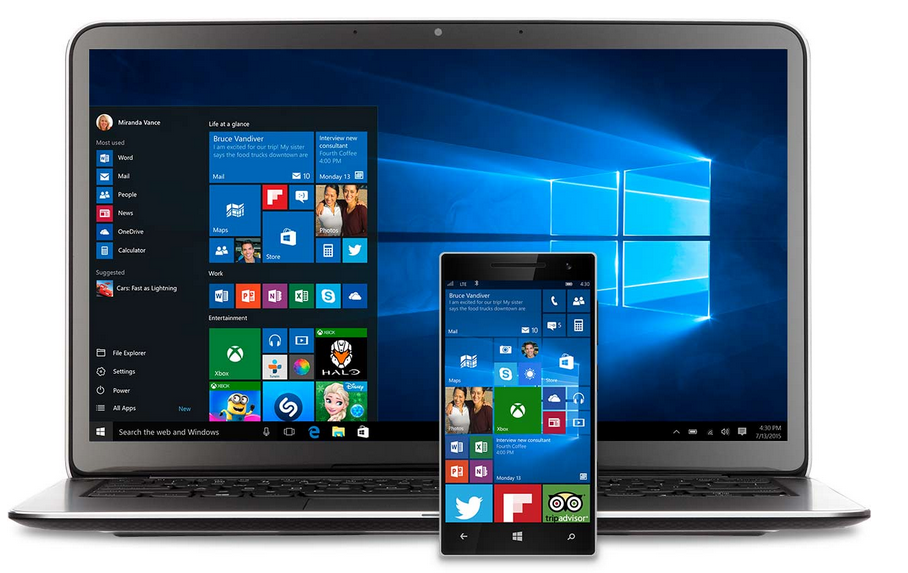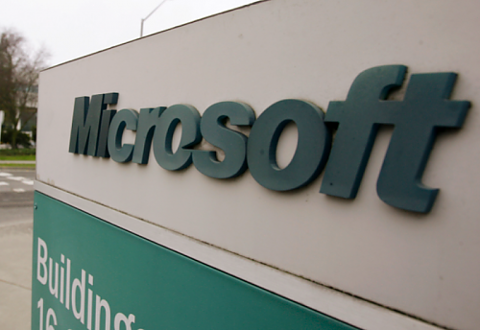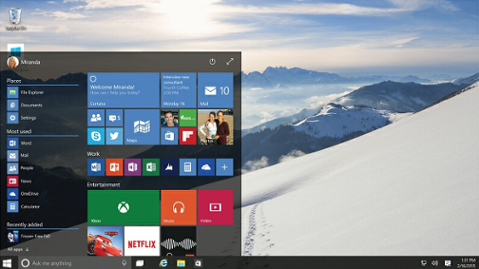 Microsoft plans on offering Windows as a cloud-based subscription service, according to multiple reports. The subscription-based version of Windows 10 Enterprise will cost $7 per seat and offer a variety of security tools. Once available only to large enterprises willing to shell out a significant up-front payment (and stay bound to a multi-year contract), this top-shelf version of Windows could help small businesses more effectively manage their regulatory and safety needs without hiring more specialists. Microsoft has not announced any plans to make the consumer version of Windows 10 a subscription product, although it’s not outside the realm of possibility that the company could start charging for certain high-end features in coming years. Microsoft’s aggressive push into the cloud over the past several years has resulted in Azure (a cloud-based platform for developers), Office 365 (productivity software by subscription) and other services. In contrast to his predecessors, current CEO Satya Nadella has also embraced the concept of Microsoft software running on rival operating systems; for example, Office is now available for both Apple’s iOS and Google Android. Microsoft launched Windows 10 in 2015 with the intention of having the operating system running on 1 billion devices within three years. The company will not make that goal, due in large part to its continued issues with mobile. “Due to the focusing of our phone hardware business, it will take longer than [fiscal year 2018] for us to reach our goal of 1 billion monthly active devices,” read a statement from a Microsoft spokesperson. “In the year ahead, we are excited about usage growth coming from commercial deployments and new devices.” According to its just-announced earnings for the fourth fiscal quarter of 2016, Microsoft’s phone business has declined 71 percent. While the expansion of Microsoft software to iOS and Android may mitigate some of the damage associated with the implosion of Windows Phone, that doesn’t help Windows 10’s adoption rate.
Microsoft plans on offering Windows as a cloud-based subscription service, according to multiple reports. The subscription-based version of Windows 10 Enterprise will cost $7 per seat and offer a variety of security tools. Once available only to large enterprises willing to shell out a significant up-front payment (and stay bound to a multi-year contract), this top-shelf version of Windows could help small businesses more effectively manage their regulatory and safety needs without hiring more specialists. Microsoft has not announced any plans to make the consumer version of Windows 10 a subscription product, although it’s not outside the realm of possibility that the company could start charging for certain high-end features in coming years. Microsoft’s aggressive push into the cloud over the past several years has resulted in Azure (a cloud-based platform for developers), Office 365 (productivity software by subscription) and other services. In contrast to his predecessors, current CEO Satya Nadella has also embraced the concept of Microsoft software running on rival operating systems; for example, Office is now available for both Apple’s iOS and Google Android. Microsoft launched Windows 10 in 2015 with the intention of having the operating system running on 1 billion devices within three years. The company will not make that goal, due in large part to its continued issues with mobile. “Due to the focusing of our phone hardware business, it will take longer than [fiscal year 2018] for us to reach our goal of 1 billion monthly active devices,” read a statement from a Microsoft spokesperson. “In the year ahead, we are excited about usage growth coming from commercial deployments and new devices.” According to its just-announced earnings for the fourth fiscal quarter of 2016, Microsoft’s phone business has declined 71 percent. While the expansion of Microsoft software to iOS and Android may mitigate some of the damage associated with the implosion of Windows Phone, that doesn’t help Windows 10’s adoption rate. Windows 10 Moving to Subscription Model?
 Microsoft plans on offering Windows as a cloud-based subscription service, according to multiple reports. The subscription-based version of Windows 10 Enterprise will cost $7 per seat and offer a variety of security tools. Once available only to large enterprises willing to shell out a significant up-front payment (and stay bound to a multi-year contract), this top-shelf version of Windows could help small businesses more effectively manage their regulatory and safety needs without hiring more specialists. Microsoft has not announced any plans to make the consumer version of Windows 10 a subscription product, although it’s not outside the realm of possibility that the company could start charging for certain high-end features in coming years. Microsoft’s aggressive push into the cloud over the past several years has resulted in Azure (a cloud-based platform for developers), Office 365 (productivity software by subscription) and other services. In contrast to his predecessors, current CEO Satya Nadella has also embraced the concept of Microsoft software running on rival operating systems; for example, Office is now available for both Apple’s iOS and Google Android. Microsoft launched Windows 10 in 2015 with the intention of having the operating system running on 1 billion devices within three years. The company will not make that goal, due in large part to its continued issues with mobile. “Due to the focusing of our phone hardware business, it will take longer than [fiscal year 2018] for us to reach our goal of 1 billion monthly active devices,” read a statement from a Microsoft spokesperson. “In the year ahead, we are excited about usage growth coming from commercial deployments and new devices.” According to its just-announced earnings for the fourth fiscal quarter of 2016, Microsoft’s phone business has declined 71 percent. While the expansion of Microsoft software to iOS and Android may mitigate some of the damage associated with the implosion of Windows Phone, that doesn’t help Windows 10’s adoption rate.
Microsoft plans on offering Windows as a cloud-based subscription service, according to multiple reports. The subscription-based version of Windows 10 Enterprise will cost $7 per seat and offer a variety of security tools. Once available only to large enterprises willing to shell out a significant up-front payment (and stay bound to a multi-year contract), this top-shelf version of Windows could help small businesses more effectively manage their regulatory and safety needs without hiring more specialists. Microsoft has not announced any plans to make the consumer version of Windows 10 a subscription product, although it’s not outside the realm of possibility that the company could start charging for certain high-end features in coming years. Microsoft’s aggressive push into the cloud over the past several years has resulted in Azure (a cloud-based platform for developers), Office 365 (productivity software by subscription) and other services. In contrast to his predecessors, current CEO Satya Nadella has also embraced the concept of Microsoft software running on rival operating systems; for example, Office is now available for both Apple’s iOS and Google Android. Microsoft launched Windows 10 in 2015 with the intention of having the operating system running on 1 billion devices within three years. The company will not make that goal, due in large part to its continued issues with mobile. “Due to the focusing of our phone hardware business, it will take longer than [fiscal year 2018] for us to reach our goal of 1 billion monthly active devices,” read a statement from a Microsoft spokesperson. “In the year ahead, we are excited about usage growth coming from commercial deployments and new devices.” According to its just-announced earnings for the fourth fiscal quarter of 2016, Microsoft’s phone business has declined 71 percent. While the expansion of Microsoft software to iOS and Android may mitigate some of the damage associated with the implosion of Windows Phone, that doesn’t help Windows 10’s adoption rate. 


